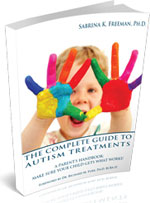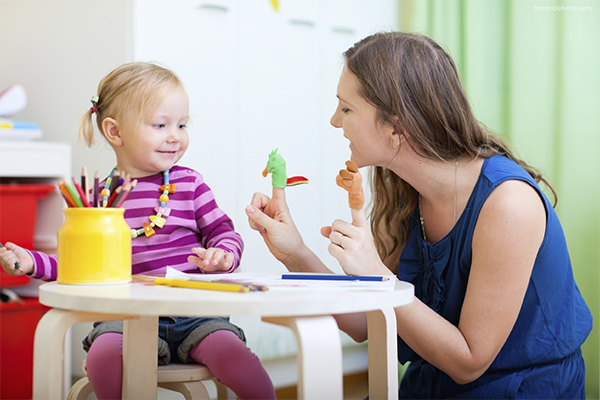 Often, we focus on how to improve the behavior of an individual, but there are many times in which teachers must figure out a way to improve the behavior of the entire class. In ABA, we might implement a group contingency, a strategy in which reinforcement for the whole group is based upon the behavior of one or more people within the group meeting a performance criterion (Cooper, Heron, & Heward, 2007).
Often, we focus on how to improve the behavior of an individual, but there are many times in which teachers must figure out a way to improve the behavior of the entire class. In ABA, we might implement a group contingency, a strategy in which reinforcement for the whole group is based upon the behavior of one or more people within the group meeting a performance criterion (Cooper, Heron, & Heward, 2007).
Group contingencies can be especially beneficial for teachers because it may not always be possible to implement a contingency for an individual or there may be several students who need improvement with the same behavior. It’s also a useful strategy for individuals who respond well to peer influence. Furthermore, there are several studies that demonstrate the group contingencies can increase positive social interactions within a group.
Let’s look at examples of each type of contingency. In the first type, a dependent group contingency, reinforcement for all members of the group depends on the behavior of a single person within the group or a small group of people within the group. For example, you might say, “If Joseph remains in his seat for all of math, we will have five extra minutes of recess today.” This can be highly motivating for Joseph, because his peers will respond well to him if he earns them access to five more minutes of recess (leading some to call it the “hero procedure” because the individual is viewed so positively upon earning the reward.) It’s clear that if you have a student who is not motivated by social reinforcement from peers, this type of contingency would backfire. However, there is plenty of research that shows it’s benefits. (Allen, Gottselig, & Boylan, 1982; Gresham, 1983; Kerr & Nelson, 2002)
In the second type, an independent group contingency, criterion for accessing reinforcement is presented to everyone, but only the individuals who meet criterion earn the reinforcer. For example, you might say “If you remain in your seat for all of math class, you will earn five extra minutes of recess today.” In this contingency, every student who reaches criterion accesses the extra recess time, but those students who left their seat do not earn the extra five minutes. Another example might be, “Each person who turns in all homework earns two bonus points on their spelling test.” In this set up, the entire class is working towards a common goal, but the individuals who achieve the goal earn reinforcement no matter how their peers perform.
In the third type, an interdependent group contingency, reinforcement for all members of the group depends on the behavior of each member of the group meeting a performance criterion. Mayer, Sulzer-Azaroff, & Wallace put it very well when they wrote “Independent group contingencies involve treating the members of a group as if they were a single behaving entity. The behavior of the group is reinforced contingent on the collective achievement of its members” (2014). In many classrooms there some type of independent group contingency in place, such as earning behavior points per class period or keeping your name on the green light (with yellow and red lights indicating problematic behaviors.) It’s quite simple to add an interdependent group contingency to these systems already in place. For example, you might say, “If all students names are still on the green light at the end of math, everyone earns an extra five minutes of recess.” There is evidence that interdependent group contingencies promote cooperation within groups (Poplin & Skinner, 2003; Salend & Sonnenschein, 1989).
Group contingencies are an excellent tool for classroom teachers, as well as anyone else working to manage a group of individuals.
FURTHER READING
Allen, Gottselig, & Boylan. (1982). A practical mechanism for using free time as a reinforcer in the classroom. Education and Treatment of Children, 5(4), 347-353.
Cooper, Heron, & Heward. (2007). Applied Behavior Analysis – 2nd edition. Englewood Cliffs; NJ: Prentice-Hall.
Gresham, F.M. (1983). Use of a home-based dependent group contingency system in controlling destructive behavior: A case study. School Psychology Review, 12(2), 195-199.
Kerr, M.M. & Nelson, C.M. (2002). Strategies for addressing behavior problems in the classroom (4th ed.). Upper Saddle River, NJ: Merrill/Prentice Hall.
Mayer, Sulzer-Azaroff, & Wallace. (2014). Behavior Analysis for Lasting Change (3rd ed.). Cornwall-on-Hudson, NY: Sloan Publishing.
Popkin, J. & Skinner, C. (2003). Enhancing academic performance in a classroom serving students with serious emotional disturbance: Interdependent group contingencies with randomly selected components. School Psychology Review, 32(2), 282-296.
Salend, S.J., & Sonnenschein, P. (1989). Validating the effectiveness of a cooperative learning strategy through direct observation. Journal of School Psychology, 27, 47-58.
WRITTEN BY SAM BLANCO, MSED, BCBA
Sam is an ABA provider for students ages 3-12 in NYC. Working in education for ten years with students with Autism Spectrum Disorders and other developmental delays, Sam has developed strategies for achieving a multitude of academic, behavior, and social goals. Sam is currently pursuing her PhD in Applied Behavior Analysis at Endicott College.
Photo courtesy of Books and Blogs by Cindy Andrews



 This leads to several considerations to take into account when toilet training boys. I agree with Weitzen that some of these issues arise from the simple fact that women are predominantly toilet training boys. However, it’s also possible that such issues arise from the fact that many boys are trained in early intervention or preschool years without consideration of the implications of those training techniques several years down the line, and without further intervention or training later in life. Either way, it’s important to recognize that training of life skills should be completed in such a way as to develop effective skills that are similar to those of the child’s same-age peers. To that end, here are two considerations:
This leads to several considerations to take into account when toilet training boys. I agree with Weitzen that some of these issues arise from the simple fact that women are predominantly toilet training boys. However, it’s also possible that such issues arise from the fact that many boys are trained in early intervention or preschool years without consideration of the implications of those training techniques several years down the line, and without further intervention or training later in life. Either way, it’s important to recognize that training of life skills should be completed in such a way as to develop effective skills that are similar to those of the child’s same-age peers. To that end, here are two considerations: Learning that your child has autism is incredibly overwhelming. You’re under intense stress to make the best decisions possible for your child, and to do so quickly. Add to the fact that autism is a popular topic in the news and social media, so tips and quick fixes frequently show up in headlines and news feeds. Autism is considered to be a fad treatment magnet, and while some of the fad treatments are ineffective, others are flat out dangerous. How is it possible to parse through all this to find reliable information? Here are a few tips to help you out:
Learning that your child has autism is incredibly overwhelming. You’re under intense stress to make the best decisions possible for your child, and to do so quickly. Add to the fact that autism is a popular topic in the news and social media, so tips and quick fixes frequently show up in headlines and news feeds. Autism is considered to be a fad treatment magnet, and while some of the fad treatments are ineffective, others are flat out dangerous. How is it possible to parse through all this to find reliable information? Here are a few tips to help you out: So where can you find valid information?
So where can you find valid information?  Noncontingent reinforcement (NCR) is the presentation of reinforcement independent of behavior, and there are many studies out there that demonstrate it can have a significant impact on behavior.
Noncontingent reinforcement (NCR) is the presentation of reinforcement independent of behavior, and there are many studies out there that demonstrate it can have a significant impact on behavior. Recently I was working with a family to toilet train their son Jonathan, a six-year-old with autism. (Names and identifying characteristics have been changed to protect confidentiality.) When he eliminated in the toilet, part of his reinforcement was getting to watch the water go down the toilet after flushing. At some point, he developed the behavior of putting his hands into the toilet water as it was flushing.
Recently I was working with a family to toilet train their son Jonathan, a six-year-old with autism. (Names and identifying characteristics have been changed to protect confidentiality.) When he eliminated in the toilet, part of his reinforcement was getting to watch the water go down the toilet after flushing. At some point, he developed the behavior of putting his hands into the toilet water as it was flushing.

 All of these mandates are essential to helping my students to progress, but they also serve to overlook my students’ strengths. There is little space on an IEP to focus on what my student is quite skilled at, or to detail a plan for encouraging those skills. The long-term implications of failing to nurture a student’s strengths range from increasing boredom and frustration in school to failing to prepare students for engaging careers.
All of these mandates are essential to helping my students to progress, but they also serve to overlook my students’ strengths. There is little space on an IEP to focus on what my student is quite skilled at, or to detail a plan for encouraging those skills. The long-term implications of failing to nurture a student’s strengths range from increasing boredom and frustration in school to failing to prepare students for engaging careers.


